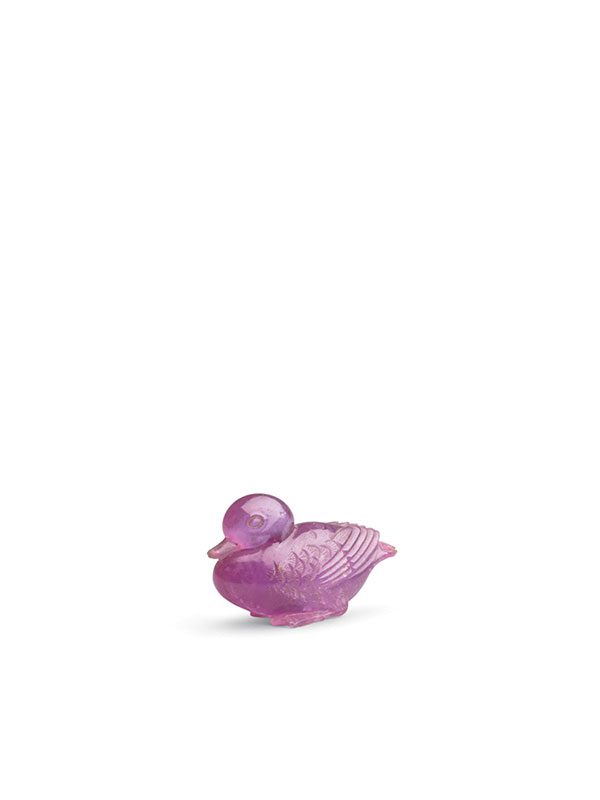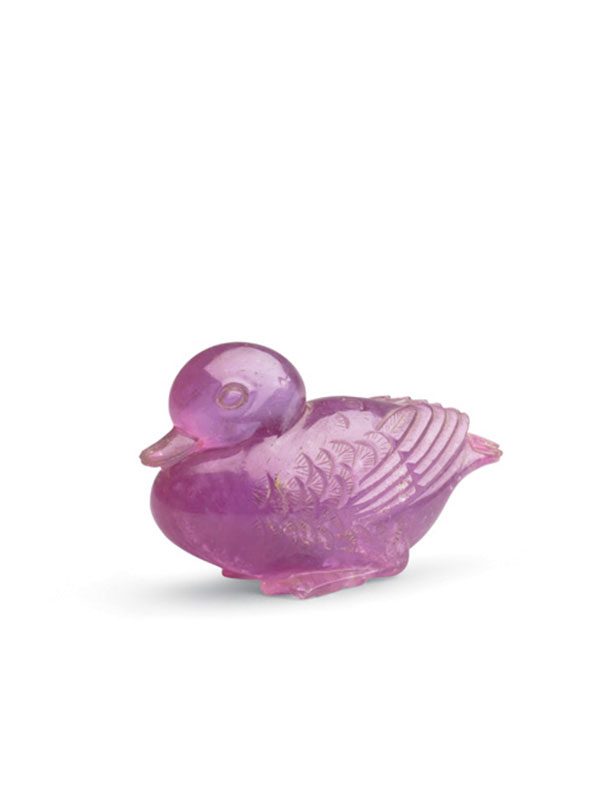Tourmaline duck
A small tourmaline standing duck, the animal carved into a sculpture figure. Its round head rests on its chest, its pointed beak and feathery wings are well defined in low relief carving. Its feet are carved in minute detail. The piece is well polished and the stone is of classic pink rose colour, with some crystal structure visible.
This lovely miniature duck is made of pink tourmaline, which is known among Chinese people as the favourite gemstone of the Empress Dowager Cixi (1835 – 1908) of the Qing dynasty. Tourmaline is classified as a semi-precious gemstone that comes in a wide variety of colours. The pink rose colour of the present tourmaline is due to its lithium-rich component. The depiction of ducks in Chinese history dates back to at least the Han Dynasty (202 BC – 220AD), and mandarin ducks (yuanyang) have been found as a motif amongst the embroidered textiles discovered in the famous Dunhuang Caves dating from the Tang dynasty.[1] A comparable miniature vase similarly made of pink tourmaline was formerly in the Qing Court collection and is now in the collection of the National Palace Museum, Taipei.[2]
- Welch, P. B. Chinese Art- A Guide to Motifs and Visual Imagery, Tuttle publishing, Singapore, 2012, p. 71
- The National Palace Museum, Taipei online collection archive, no. 故雜 1497


